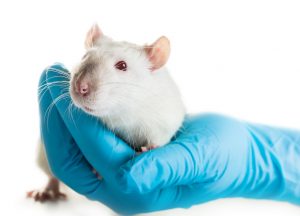
“It is much better to prevent than to cure.”
Bernadino Ramazzini (1633-1714), “The Father of Occupational Medicine.”
The Ramazzini Institute is HHRA’s major toxicology partner. The Institute is an internationally-renowned, private laboratory in Bologna, Italy. It has been conducting high impact, cutting-edge animal studies since 1971.
Ramazzini scientists focus on the potential of chemicals and drugs to cause cancer, reproductive effects, or other unwelcome health outcomes. The results of Ramazzini studies have led to the regulation and/or banning of several widely used food additives, high-volume chemicals, and drugs.
- In 1971, the Institute’s first project focused on vinyl chloride, a major component in plastics now widely accepted as a proven human carcinogen. In 1986 their attention turned to the unintended side effects of drugs used in chemotherapy to treat cancer.
- In 1991 Ramazzini Institute scientists conducted cutting-edge work on the impacts of low-dose radiation in the wake of the Chernobyl disaster.
- In 2005 its work identified for the first time the link between the artificial sweetener aspartame and cancer.
The work of the Ramazzini Institute is supported by the Collegium Ramazzini, an international academy composed of around 180 fellows from 32 countries. The Collegium includes the chair of the HHRA Science Advisory Board, Dr. Phil Landrigan. Phil also chairs the Ramazzini Institute’s Science Advisory Board.
The Global Glyphosate Study

The Ramazzini Institute planned the detailed protocols in the Global Glyphosate Study (GGS) in 2018 and 2019. Now nearing completion, the GGS includes a two-year rat carcinogenicity study, a multi-generation reproduction and developmental effects study, and a battery of genotoxicity assays.
Two scientists who helped design and carry out the Heartland Study — Phil Landrigan and Melissa Perry — have been and remain involved in planning and carrying out the GGS.
As initially designed, animals in all three parts of the GGS would be administered pure, technical glyphosate, plus the Roundup Bioflow formulation now sold widely in Europe.
In 2019, Dr. Perry and Dr. Landrigan recognized that the GGS would be of limited use in understanding the human risks arising from applications of most of the glyphosate-based herbicides (GBHs) sold and applied in the U.S. This is because the majority of the GBHs sold in the U.S. contain polyethoxylated tallowamine (POEA) surfactants. GBHs containing POEA surfactants were banned in Europe and phased out in 2017. Roundup Bioflow contains a quaternary ammonium surfactant and several studies suggest that Roundup Bioflow is less genotoxic than POEA-based GBHs.
The Heartland Study team was concerned that the results of the GGS as originally planned would shed little light on the impacts of the GBHs applied in the U.S. over the last 45 years. So, the Heartland Study Management Team recommended to the Ramazzini Institute the addition of another POEA-based GBH treatment group in each of the three components of the GGS. The Ramazzini team agreed to do so on the condition that the Heartland Study, and now HHRA, covers the cost of adding a new treatment group in the GGS protocol.
Integrating Scientific Tools
 Another body of research arose from the HHRA-Ramazzini Institute partnership. Scientists at King’s College in London sequenced the bone marrow from rats that had been exposed to glyphosate and Roundup Bioflow in the sub-chronic portion of the GGS.
Another body of research arose from the HHRA-Ramazzini Institute partnership. Scientists at King’s College in London sequenced the bone marrow from rats that had been exposed to glyphosate and Roundup Bioflow in the sub-chronic portion of the GGS.
The King’s College team searched for markers of possibly heritable, epigenetic changes in the rats exposed to pure glyphosate and Roundup Bioflow, compared to the control group that was not exposed. They used advanced metabolomic methods to explore possible linkages between altered gene expression in the treated rats, and metabolic or physiologic changes in the animals known to be associated with various diseases. The paper below reports the results of their work.
Mesnage, R., Teixeira, M., Mandrioli, D., Falcioni, L., Ibragim, M., Ducarmon, Q. R., Zwittink, R. D., Amiel, C., Panoff, J. M., Bourne, E., Savage, E., Mein, C. A., Belpoggi, F., & Antoniou, M. N.; “Multi-omics phenotyping of the gut-liver axis reveals metabolic perturbations from a low-dose pesticide mixture in rats;” Communications Biology, 2021, 4(1), 471; DOI: 10.1038/s42003-021-01990-w.
Our work with the King’s College team has also generated new insights into how exposure to a glyphosate-based herbicide can impact the health and function of the human microbiome. An HHRA blog by Robin Mesnage discusses the goals of this new, cutting-edge research.
